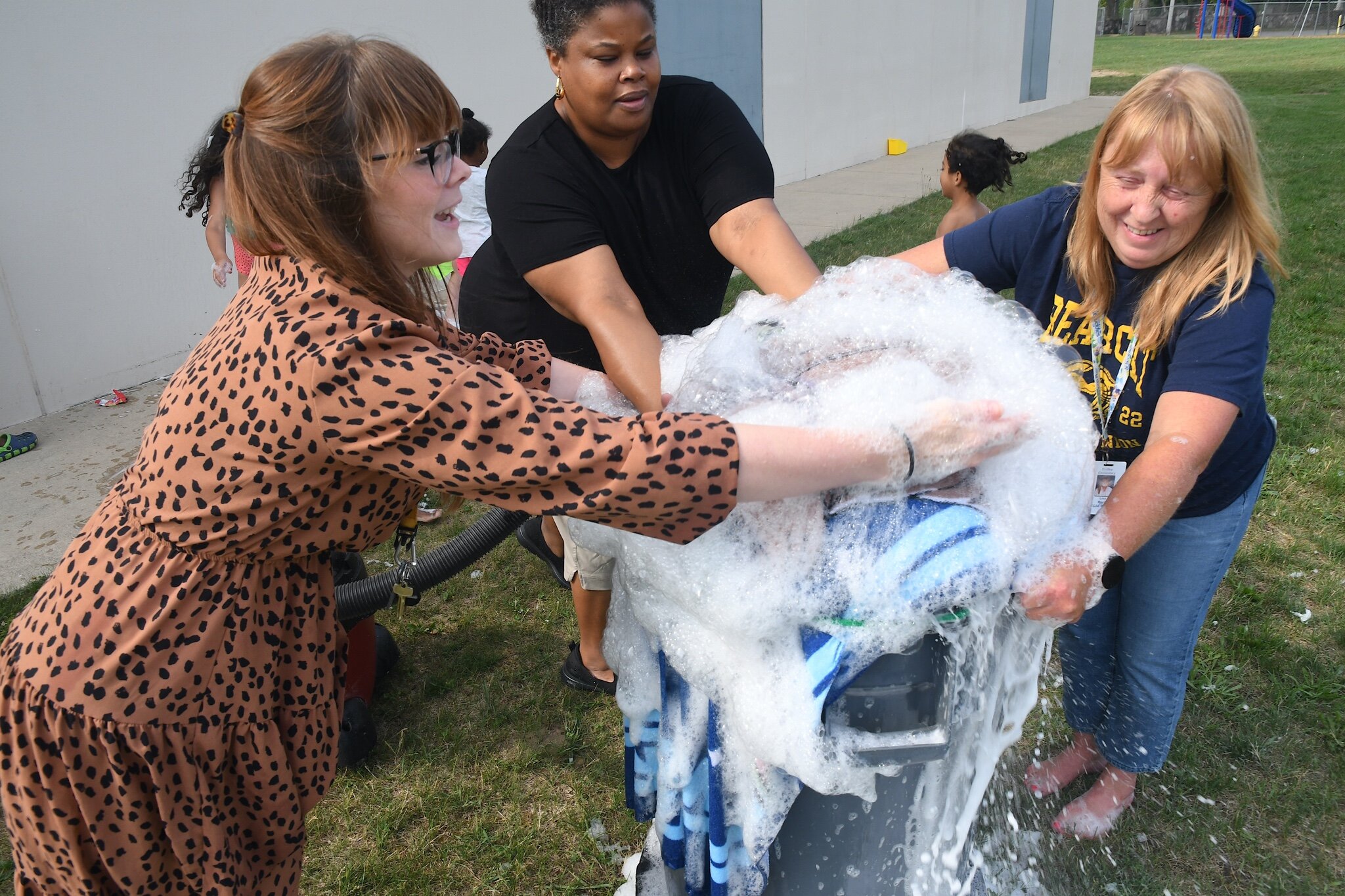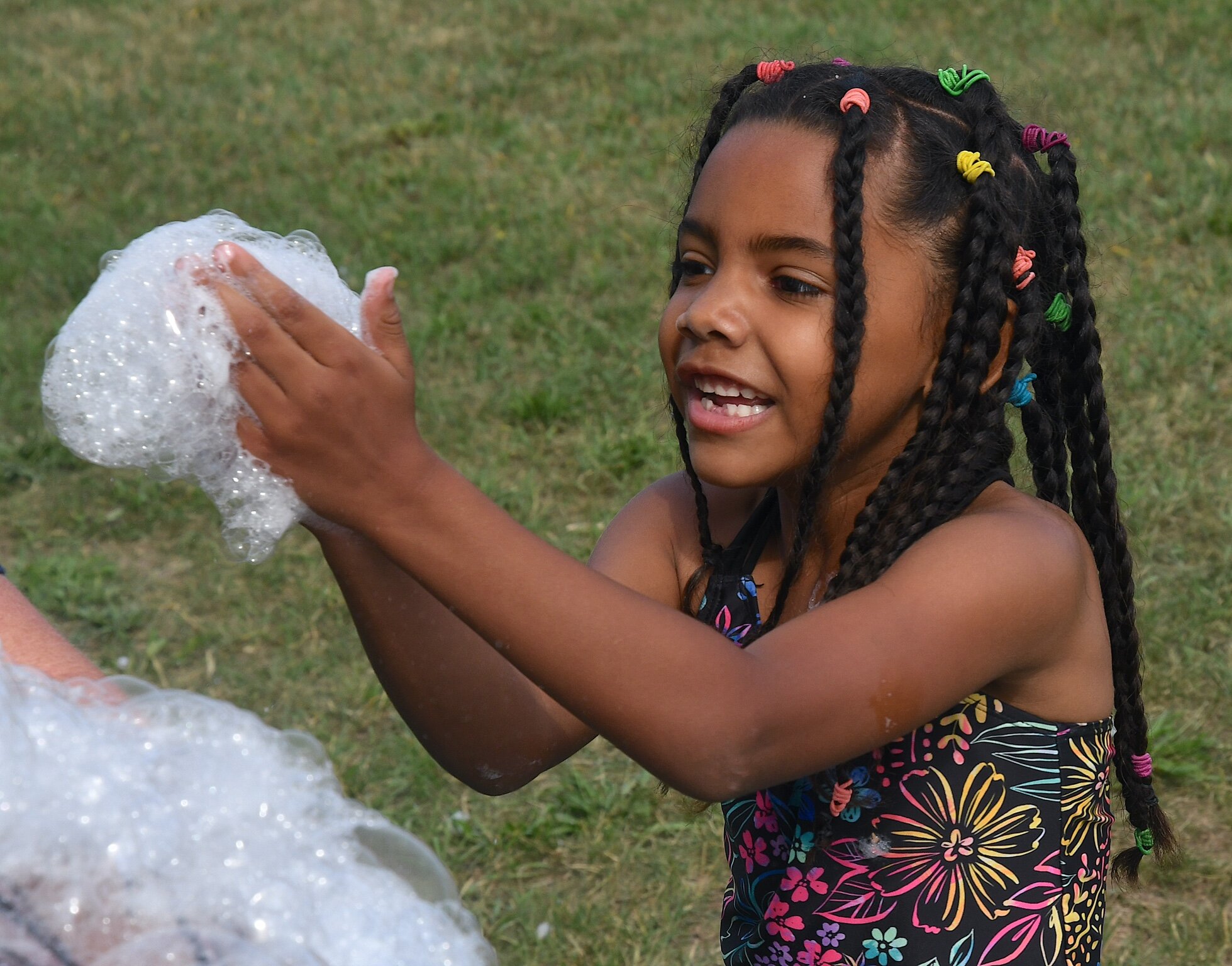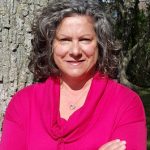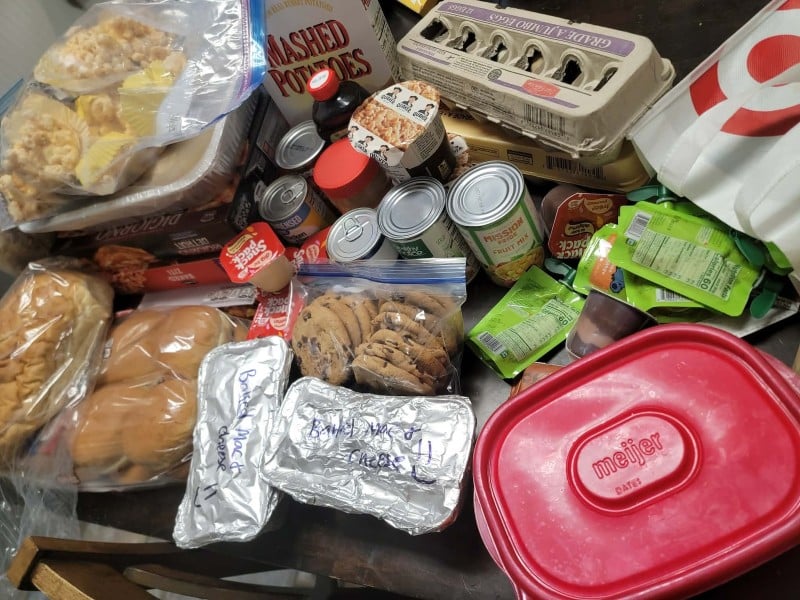Kindergarten Success Program prepares Battle Creek’s youngest learners
In its sixth year, Battle Creek's free summer Kindergarten Success Program helps students entering kindergarten have academic, social, and structural advantages. “I’m trying to give my son the experiences I didn’t get,” says Jahkeem Stone, a KSP parent. “I’m trying to get him to be well-rounded and boisterous and comfortable with himself.”
Editor’s note: This story is part of Southwest Michigan Second Wave’s On the Ground Battle Creek series.
Jahkeem Stone says he forgot how to write during the summer break before he entered third grade.
He is now doing everything he can to make sure his son, Jahkeem Stone II, won’t experience that same summer learning loss commonly referred to as the “Summer Slide.” This includes enrolling him in the Kindergarten Success Program, a free summer learning program offered through the Battle Creek Public Schools.

Stone learned about KSP from his son’s Great Start Readiness Program teacher at Lamora Elementary School.
“She told me that third graders who had been in the (Kindergarten Success Program) were consistently testing higher in school,” he says. “One of the first things I thought about is that he’s got to keep ahead and I wanted to keep him familiar with what he’s already learned. I remember when I was a kid and I was a pretty average kid and I don’t want that to happen to him.”
Now in its sixth year, KSP, which is held at Post-Franklin Elementary School, is designed to prevent the learning loss that students experience during their summer break from school, says Tricha Grajek, KSP Director.
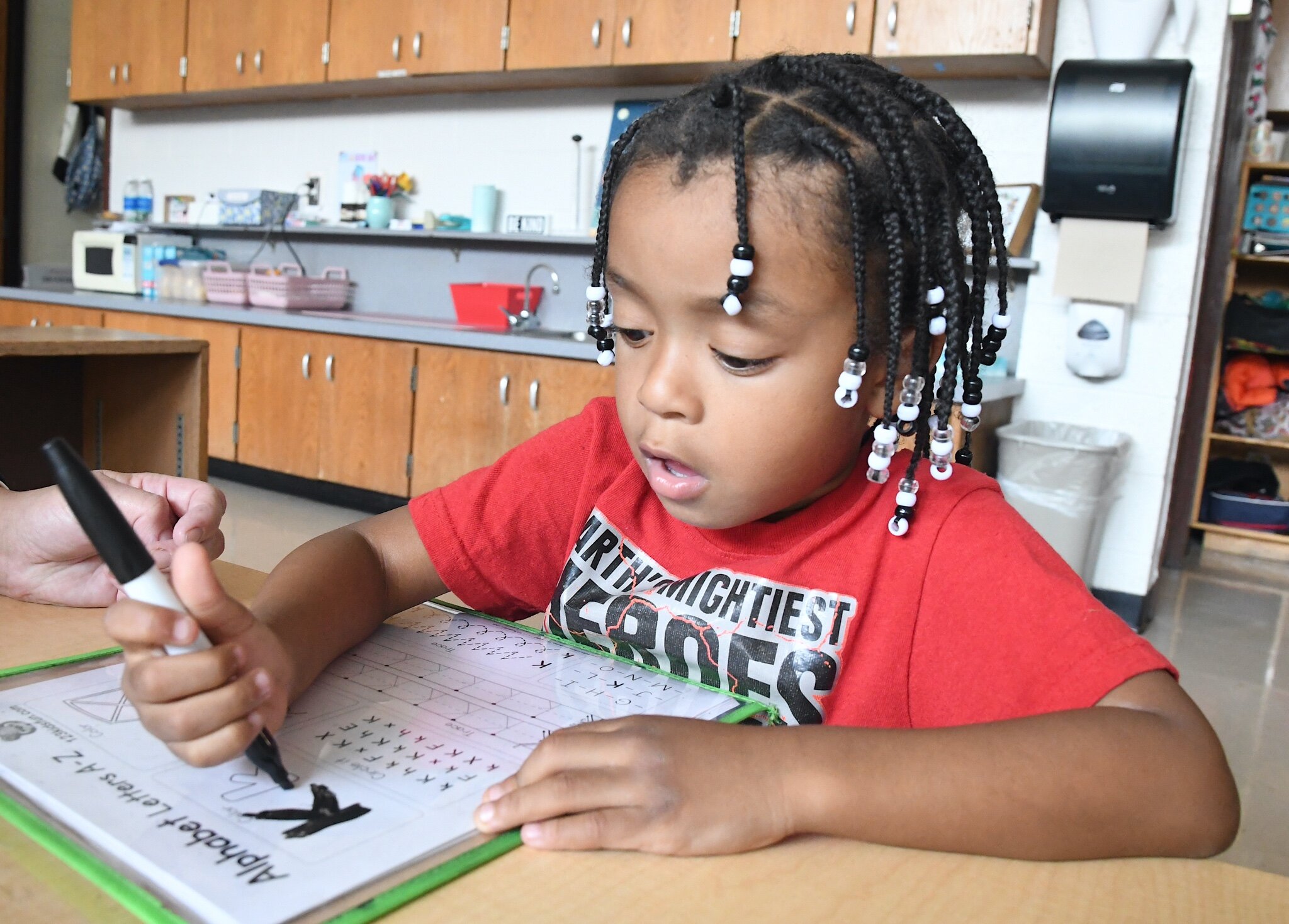
This concept of summer learning loss has been a known phenomenon for many years, says the We Are Teachers website. In the 1980s and ’90s, researchers began looking into the notion more thoroughly. They developed the term “summer slide,” and urged families and educators to take it seriously.
Here’s why:
- Kids in grades 3-5 lose about 20% of their school year gains in reading and 27% of their gains in math. (Source: Scholastic)
- Students lose about a month’s worth of learning on average over the summer. (Source: Sage Journals)
- In the summer between fifth and sixth grade, 84% of students experience summer slide in math. (Source: Kappan)
- The more kids learn during the school year, the more they’re likely to lose over the summer. (Source: Kappan)
“Research has shown that early intervention for children is what’s best to gauge their future success in school,” Grajek says. “The Summer Slide is Something everyone’s familiar with. A lot of learning gaps happen over the summer. Kids go home for three months and lose a lot of what they learned during the school year. Providing programming like KSP helps to mitigate that.”

She says the first round of kids to go through the program, now in third or fourth grade, are noticeably ahead of their peers academically and socially.
“Almost 100 percent of our students entering Kindergarten are more ready now than they were five years ago when we started the program,” Grajek says. “Normally the results of what they learn in a program like this would peter out by first grade, but they continue to outperform their peers. We have four and five-year-olds and they’re prepared and ready to go into Kindergarten in the Fall.”
To participate, parents or the child’s caregiver fill out an application. Children have to be completely enrolled in kindergarten for the upcoming school year. Among the information required are vaccination records and birth certificates.
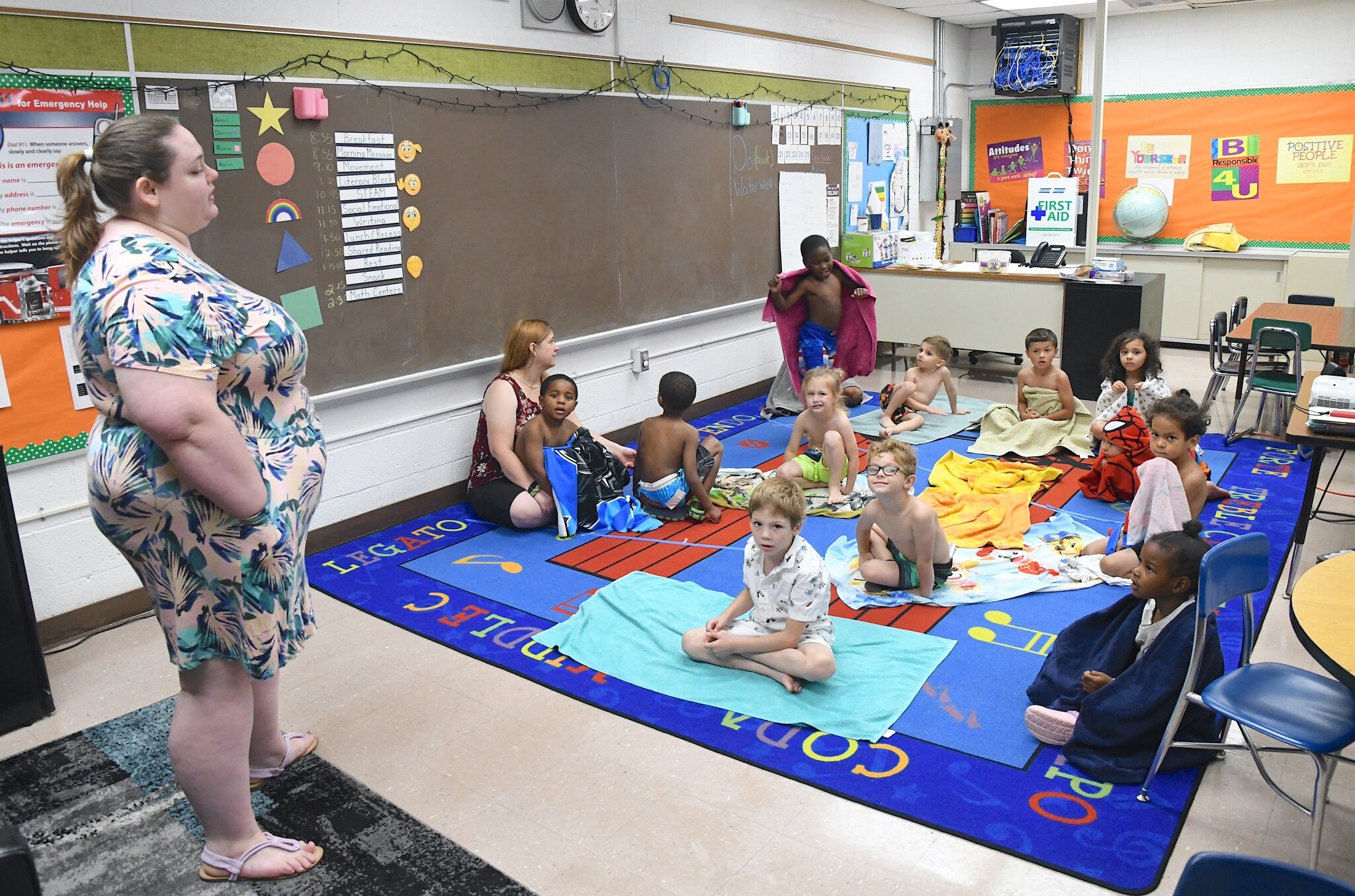
It’s not unusual for parents to forget to enroll their children in kindergarten, says Nate Hunt, Communications Manager for BCPS.
“The school year starts on August 23. In years past we have had people two, three, or four weeks into the school year signing their kids up for Kindergarten,” Hunt says. “We are working with community partners to see what else we can do to combat this enrollment lag.”
He hopes that the Bearcat Advantage will be an incentive to get students enrolled in Kindergarten before school starts so that they get 100 percent of college tuition paid for at in-state colleges and universities and eligible Historically Black Colleges and Universities within the United States.
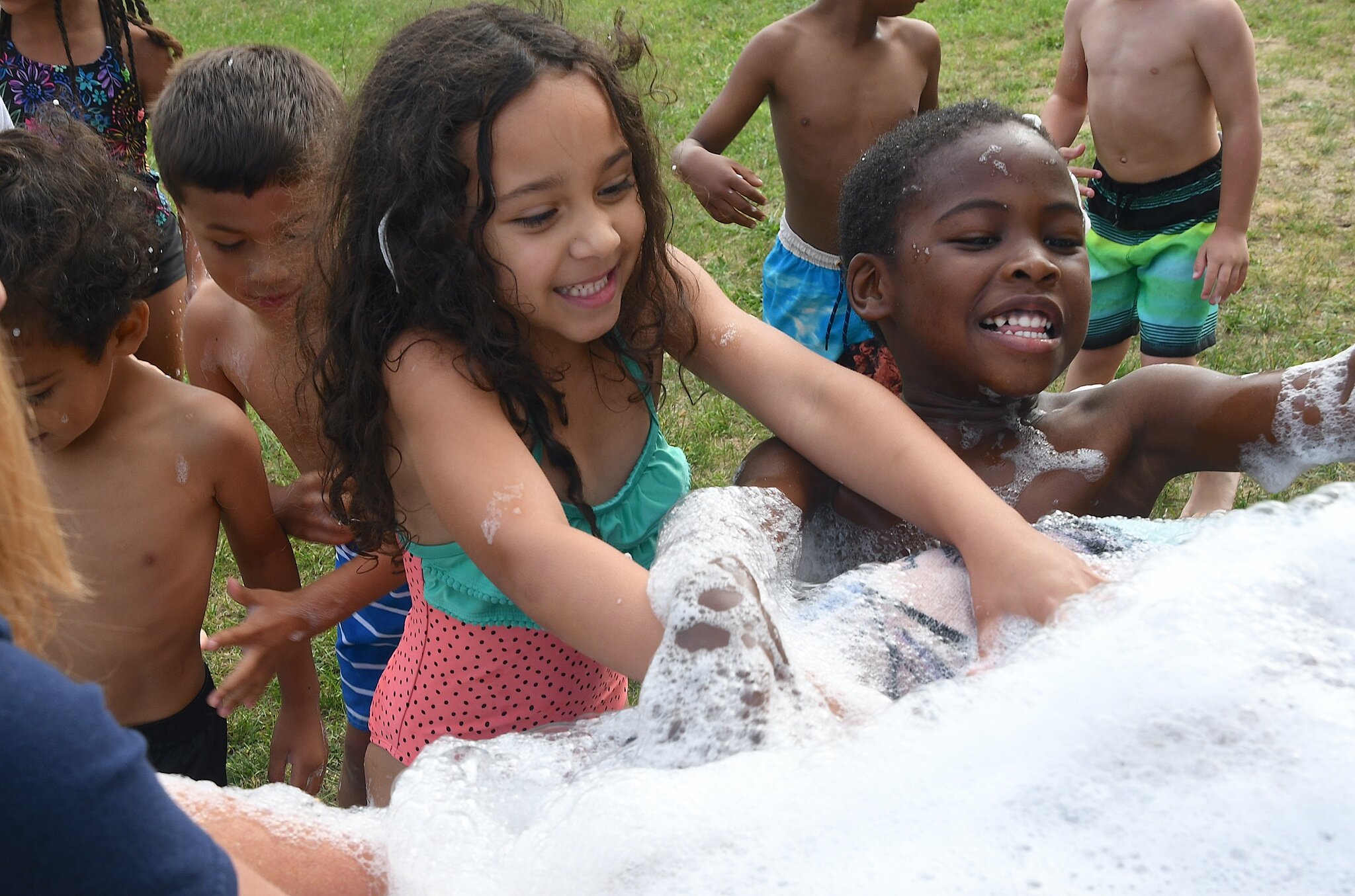
“In order to qualify for the 100 percent, they have to be enrolled no later than the second week of school,” Hunt says.
In addition to KSP, BCPS also offers a summer learning program for students in grades K-12 called the Bearcat Blast. Students meet all of June and July and go on field trips and engage in enrichment activities including art, STEM/STEAM, creative writing dance, and theater.
For those students going into 12th grade, the focus is on course credit recovery. Students enrolled in Bearcat Blast are sectioned off by grade level. Grades K-5 are at Valleyview Elementary; grades 6-8 are at the BCPS STEM school; and grades 9-12 use a wing at Battle Creek Central High School.
Hunt says there are a total of 673 students in this summer’s Bearcat Blast. The capacity has increased to meet the demand.
It’s free, it works, why wouldn’t you?
This is the question Stone asks of parents who haven’t taken advantage of KSP.
Raised by his mother after his father passed away when Stone was young, he says he always liked doing homework and getting good grades, but he never liked being in school.

“I liked being in the sun and being independent,” he says.
After graduating from BCHS in 2015, he enrolled at Kellogg Community College, but lack of transportation was a challenge that he was unable to overcome.
“I was skateboarding to catch one bus as far as it would take me and then had to catch another bus to get me to KCC,” says Stone, who works at a local manufacturing facility. “I couldn’t do it anymore.”
He says his father’s passing made him more of an introvert and less self-confident at an early age.

“I’m trying to give my son the experiences I didn’t get,” Stone says. “I’m trying to get him to be well-rounded and boisterous and comfortable with himself.”
There have been mornings when his son has asked him why he has to be in school when many of his friends aren’t.
“He instantly noticed that his school days were getting longer,” Stone says. “I tell him that it will be worth it.”
Stone says he speaks to the importance of what he’s learning in terms that his son will understand.
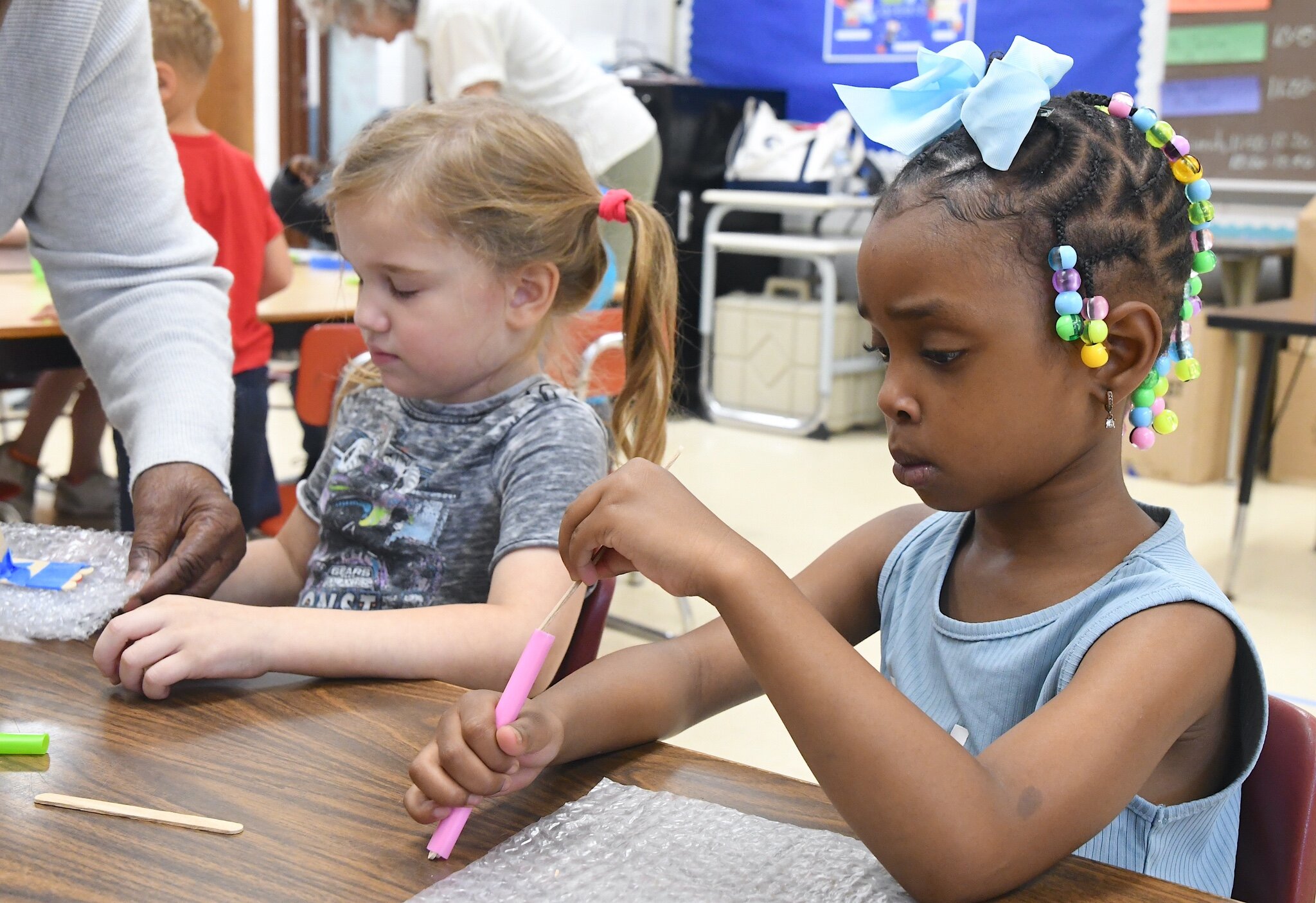
At the adult level, Stone says, “When you’re young and still learning structure, let’s make them think it’s normal. You’ve got to learn how to be a person in society. That’s what schools are about.”
The younger Stone is among 75 children enrolled in this year’s KSP. Grajek says they typically come from preschool programs at different elementary schools offered through GSRP or community-based preschool programs, adding that some have never had a preschool experience.
Academic rigor and social interactions are offered throughout the program. In some ways, Grajek says it’s like a Boot Camp for children going from preschool to Kindergarten.
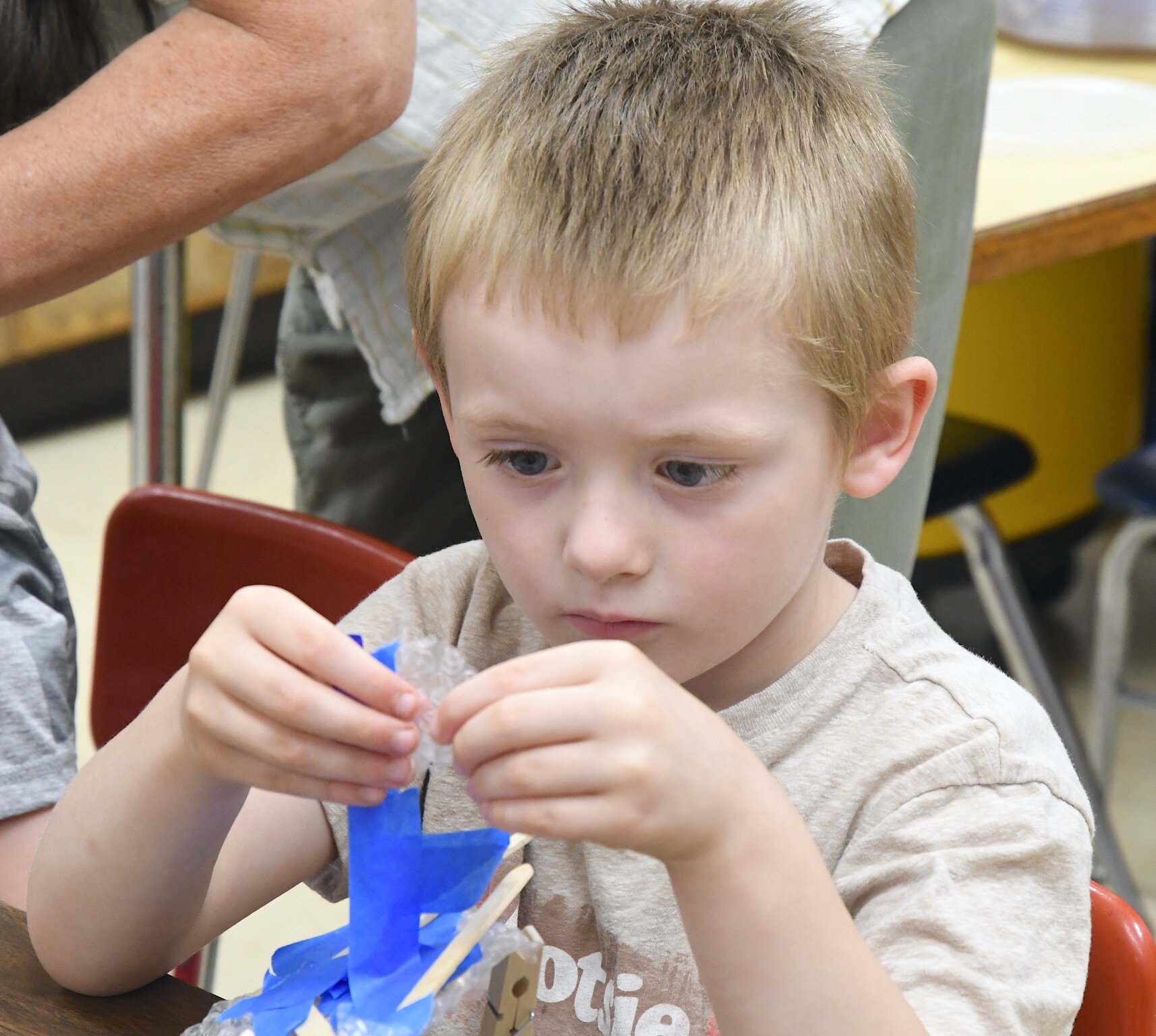
“As they get into Kindergarten, they have to share and that is student-driven and teacher-driven at times,” she says. “Our kids are used to having a choice of options in the classroom and following those options. They are learning to take turns and give and take directions in Kindergarten.
The KSP day for these students begins at 8:30 a.m. and ends at 3:30 p.m. There is an aftercare program available for parents who work outside the home.
Students start the first half of their day with one or more of the 15 teaching professionals on staff who represent Early Childhood paraprofessionals, special education, preschool, or grades K-1 teachers. The second half of their day is spent with staff from the BCPS’ 21st Century program.
“When we get those kids. It’s so critical to have early childhood specialists, teachers’ data, and intervention early on. These teachers work for months before the summer program begins to get their lesson plans and curriculum ready,” Grajek says, adding that there is a major focus on literacy and math skills.

“Over time, if they’re successful at it in Kindergarten they will carry through problem and executive function skills,” she says.
During their time with the teachers, KSP students participate in four-block model literacy learning which includes writing and alphabet knowledge where they learn which sounds attach to letters. The math incorporates story problems that use animals such as bunnies as a way to count. Students rotate through teachers and activities throughout their day. Each week there is a different theme such as animals or water to keep students interested and engaged, Grajek says.
Stone says what teachers and staff are doing is working. Among the results he’s seen with his son is his conceptual thought.
“He can walk into any situation and begin to understand it and know his role and that has to do with social interaction. The logical flow of his questions is starting to come in. He is taking things step by step from the smallest to the biggest. I feel like this program develops a higher order thinking and kids don’t realize that they’re doing it.”
Grajek, whose two sons were both in KSP, says she has several examples of the positive impact the program has made on an academic and social skills level.
While teaching preschool during a previous school year, she had two brothers who were struggling socially and academically. They had never been away from each other. They were enrolled in KSP and their mother supported them by sitting in the back of the classroom.
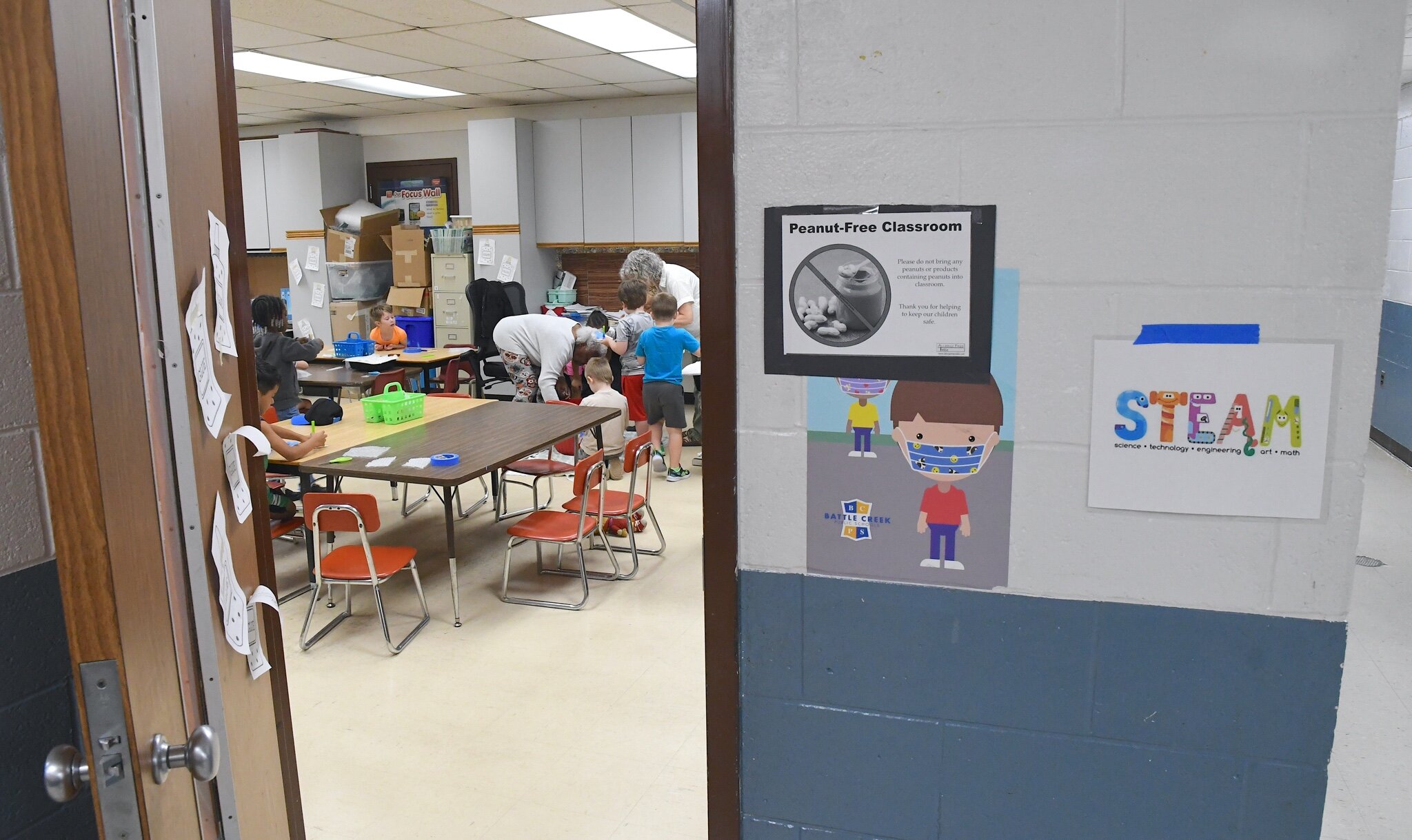
“She came in after they had been attending school and told me that they had tested the highest out of anyone else on their math scores,” Grajek says. “Within one month of being in KSP, they were community leaders, familiar with the building and the teachers working the program. Having this stability and foundation bridges the gap between naps, and being with a lot more students and teachers, and a new routine.”
The KSP students also develop a sense of empathy and caring for others. Grajek says there was a child whose father passed away during the summer.
“I was watching the staff and students come together to support that child. Those relationships have only grown stronger,” she says. “The consistency helps.”
While Stone says he wishes a program like this had been around when he was in school, he says he is glad it is available to his son who will be a first-generation college student. That is encouraging him to consider going back to school.
“I’m going to be 26 this year and there’s no reason why I couldn’t go full or part-time. Even if I go part-time for three or four years it would be worth it to get something that looks better on paper. I want to be someone who practices what I preach.”




